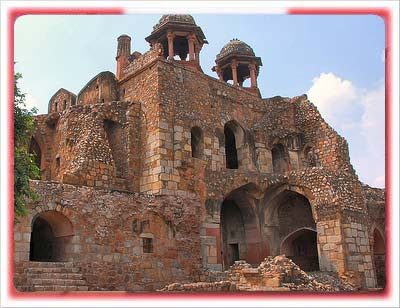
All the early Mughal Rulers except Aurangzeb were great bui1ders. With the coming of the Mughals, Indian architecture was greatly influenced by Persian styles. The Mughals constructed excellent mausoleums, mosques, forts, gardens and cities. The Mughal buildings show a uniform pattern both in structure and character.
The main characteristic features of Mughal architecture are the bulbous domes, the slender minarets with cupolas at the four corners, large halls, massive vaulted gateways and delicate ornamentation.
The few mosques and palaces built by Babar and Humayun are not of much architectural significance
Sher Shah of the Sur Dynasty who ruled over the Kingdom of the Mughals after driving Humayun out of the country was not only a great administrator but a lover of art also. He built several forts, tombs and mosques. The monuments of Sher Shah are a continuation of the Lodi style. The mausoleums are octagonal in plan and have verandahs around them, surmounted by huge domes. The verandahs have three smaller domes on each side.
Sher Shah built the Purana Quila in Delhi. Started by him, it was completed by Humayun. Built of red and buff sand-stone, it is ornamented with black and white marble and coloured tiles. A beautiful mosque inside the Quila with ornamental arches, decorative panels, geometrical designs and inscriptions is an example of the development of architecture and ornamentation during Sher Shah's reign.
Sher Shah's tomb at Sasaram in Bihar built in 1549 is in the centre of a large square tank and rises al 46 metres high. It is a two storey construction on a terraced platform. The upper terrace has pillared domes and the two storeys above have a pillared kiosk at the four corners. The base of the large central dome has thirty two sides. The tomb is decorated with coloured tiles, very few of which remain now. Entrance to the tomb is through a domed structure.
Mughal architecture begins with Akbar who showed his passion for building by planning and constructing splendid edifices. During his reign Mughal architecture took on new forms. Akbar made free use of both Hindu and Persian styles. The use of red sandstone inlaid with white marble and painted designs on walls and ceiling are the salient features of Akbar's buildings.
Akbar constructed numerous forts, towers, palaces, mosques, mausoleums and gateways. A structure of note built during his reign is Humayun's Tomb in Delhi.